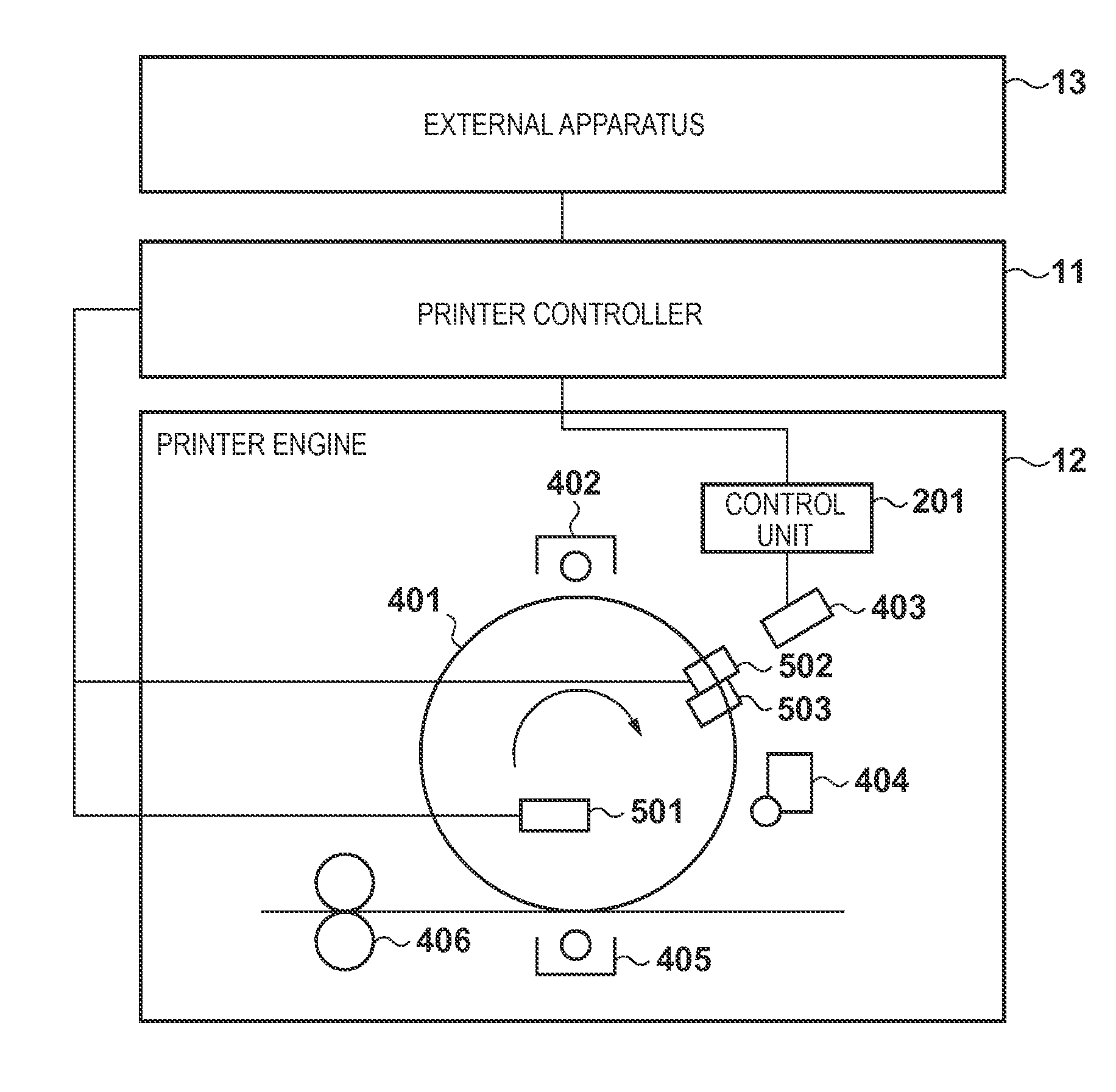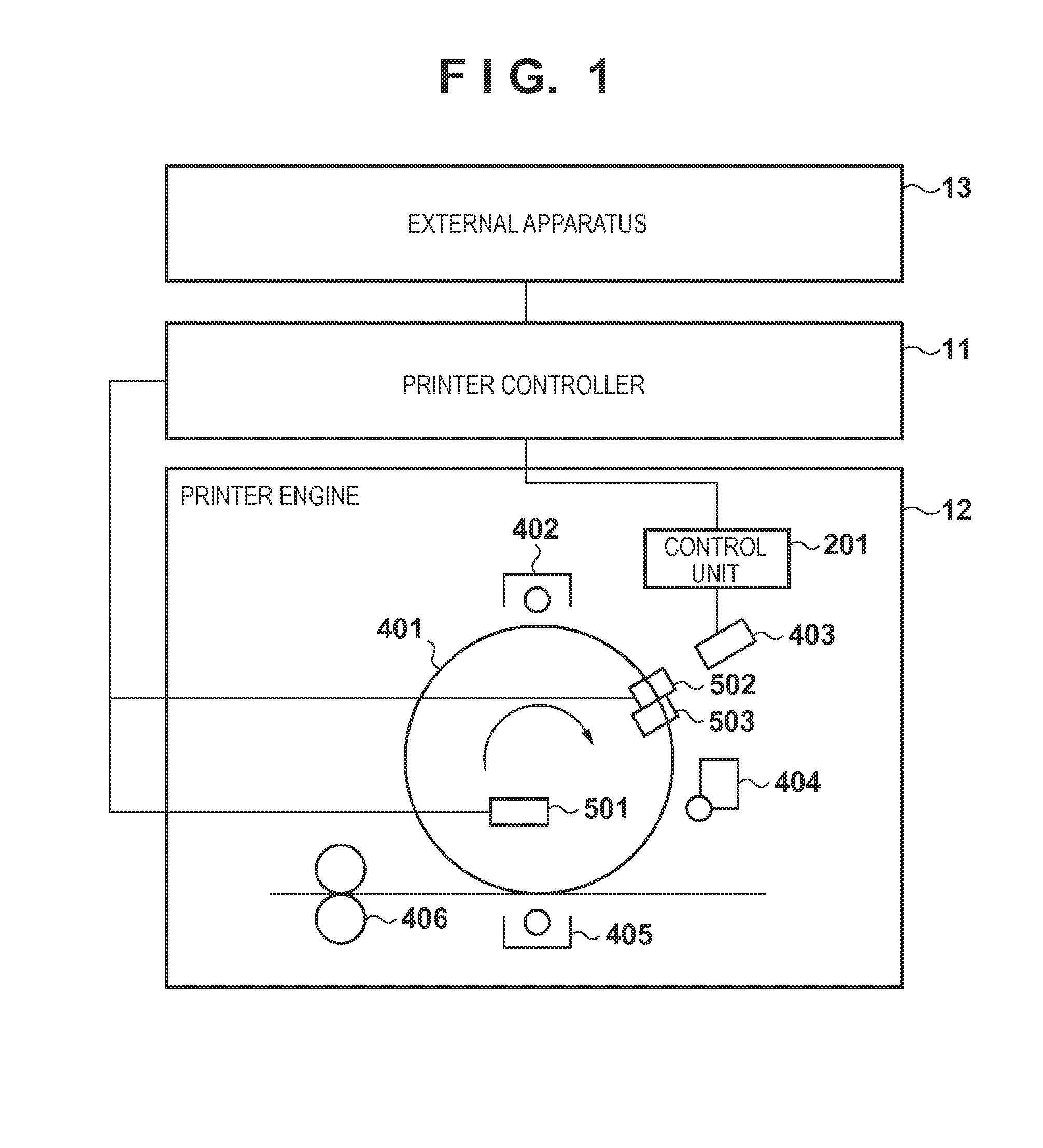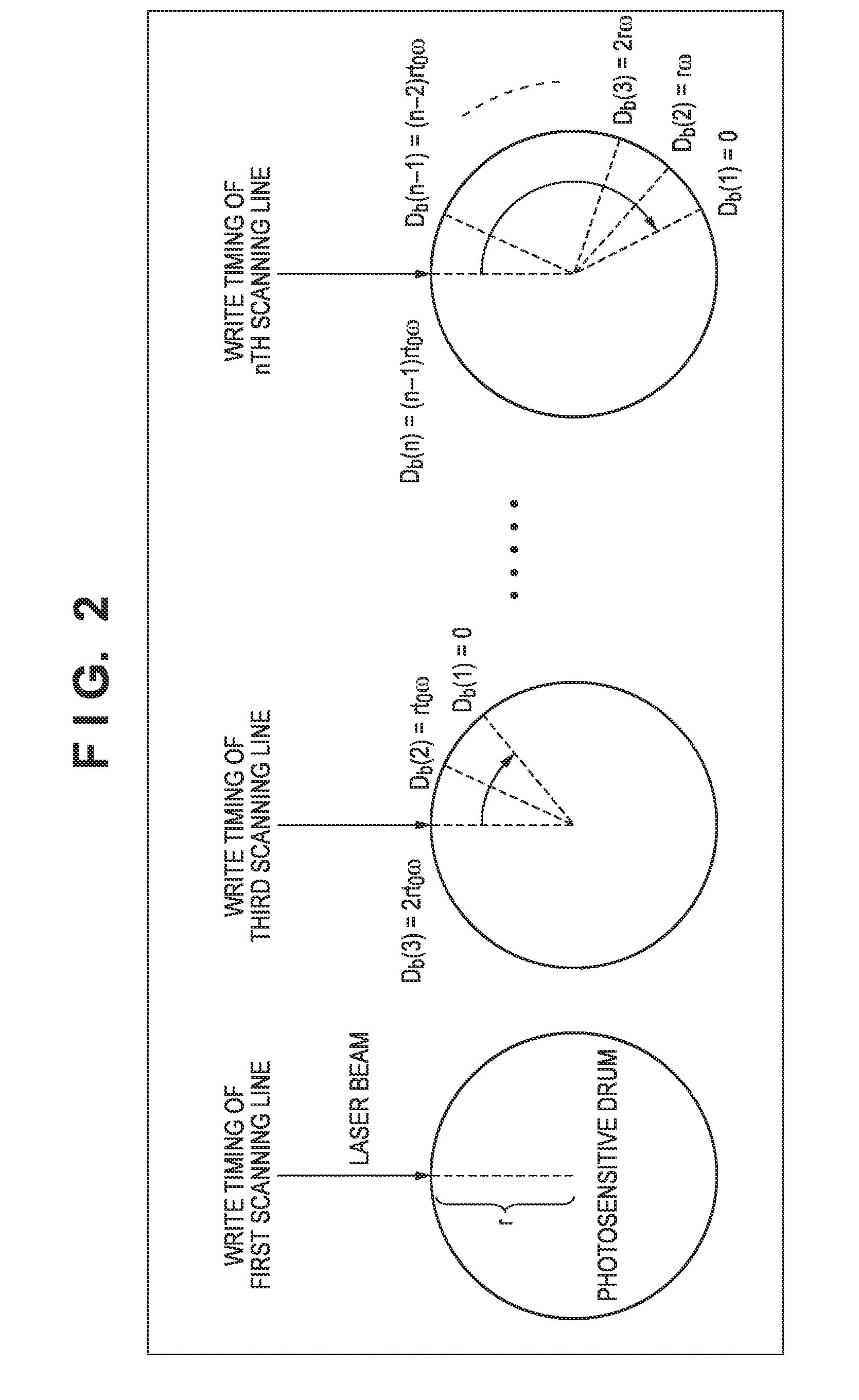Image processing apparatus, image processing method and program
a technology of image processing and image processing method, applied in the field of image processing apparatus, can solve the problems of low correction rate or the like, generating banding, and scanning line interval error, so as to reduce the banding, suppress the density variation depending on the density of the dot, and improve the accuracy
- Summary
- Abstract
- Description
- Claims
- Application Information
AI Technical Summary
Benefits of technology
Problems solved by technology
Method used
Image
Examples
first embodiment
[0057]Apparatus Arrangement
[0058]FIG. 1 is a view showing the arrangement of an image forming apparatus (an image processing apparatus) in the first embodiment. Referring to FIG. 1, an external apparatus 13 includes an interface with a hard disk drive, computer, server, network, or the like (none are shown), and inputs image data to a printer controller 11. The printer controller 11 receives input image data and performs halftone processing, exposure amount calculation processing, and exposure amount correction processing, details of which will be described later. The printer controller 11 transmits / receives a control instruction and information to / from a printer engine 12, and transmits image data to it.
[0059]The printer engine 12 includes a printer engine control unit 201, devices, and sensors. The devices are motors and the like used to drive the image carrier and paper conveyance system. The sensors are an encoder, optical position sensor, and the like. The printer engine contro...
second embodiment
[0111]The second embodiment according to the present invention will be described. The first embodiment has described exposure amount correction in an image forming apparatus which performs exposure using one laser. The second embodiment will describe exposure amount correction in an image forming apparatus which includes a plurality of lasers for simultaneous scanning and performs interlaced exposure.
[0112]Apparatus Arrangement
[0113]The image forming apparatus (the image processing apparatus) in the second embodiment includes a multi-laser scanner 407 with a plurality of lasers, in place of the laser scanner 403 with one laser which is used in the arrangement shown in FIG. 1 in the first embodiment. The image forming apparatus in the second embodiment performs interlaced exposure to form a plurality of scanning lines at intervals each of a predetermined number of scanning lines by one exposure scanning of the multi-laser scanner 407.
[0114]FIG. 11 is a block diagram showing an arrang...
third embodiment
[0135][Exposure Amount Control]
[0136]Exposure amount control in the third embodiment will be described with reference to the flowchart of FIG. 17. The arrangement of an image forming apparatus (an image processing apparatus) in the third embodiment is the same as that shown in FIG. 1 in the first embodiment, and a description thereof will not be repeated. As described above, control (to be referred to as exposure amount control) of the intensity (or emission time) of a laser beam L needs to consider a dot pattern around the dot of interest. Note that processing shown in FIG. 17 is executed in every main scanning of the laser beam and repeated by the number of pixels (number of lines) of one image in the sub-scanning direction. An arrangement which performs exposure amount control will be exemplified with reference to the block diagram of FIG. 18.
[0137]A scanning line position calculation unit 2104 in a printer controller 11 calculates a scanning line position error on a scanning lin...
PUM
 Login to View More
Login to View More Abstract
Description
Claims
Application Information
 Login to View More
Login to View More - R&D
- Intellectual Property
- Life Sciences
- Materials
- Tech Scout
- Unparalleled Data Quality
- Higher Quality Content
- 60% Fewer Hallucinations
Browse by: Latest US Patents, China's latest patents, Technical Efficacy Thesaurus, Application Domain, Technology Topic, Popular Technical Reports.
© 2025 PatSnap. All rights reserved.Legal|Privacy policy|Modern Slavery Act Transparency Statement|Sitemap|About US| Contact US: help@patsnap.com



